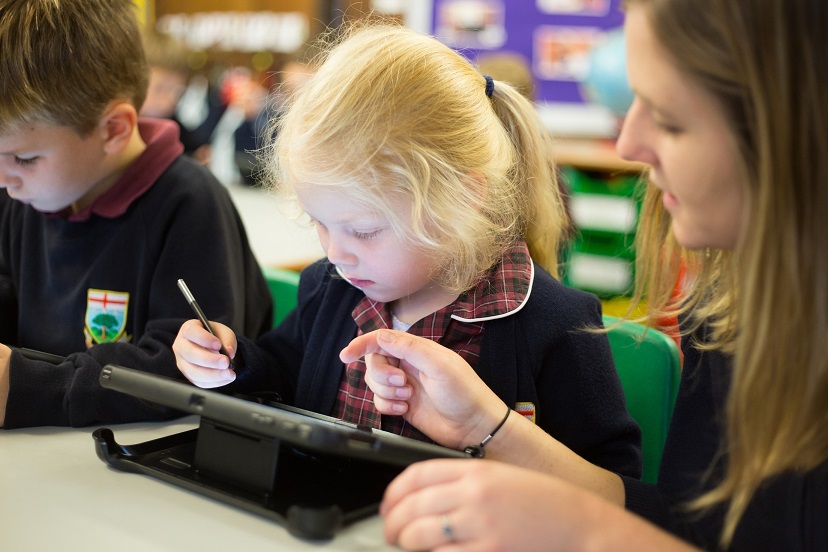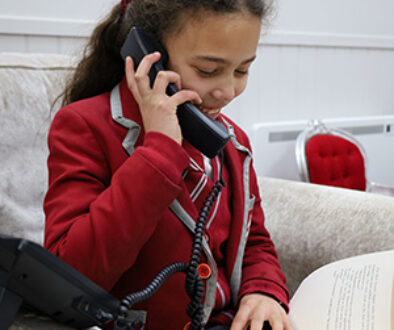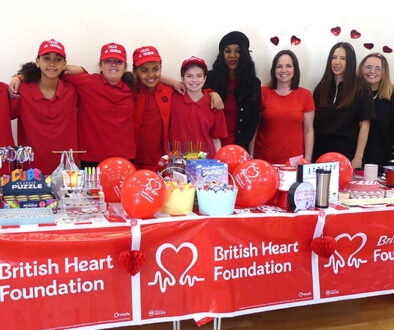Early Years Curriculum – Much More Than Play!
When parents first send their child to school or nursery, it is probably fair to say that the majority consider those early years to be primarily focused on socialising the child, establishing routines, some basic learning and plenty of play!
However, the reality is that these first steps into the education system are actually formally defined as the Early Years key stage of the national curriculum, (which covers children aged from 3 to 5 – so until the end of Reception) and as such, schools and nurseries are required to cover a range of subjects / meet specific learning goals and at the end of this stage, the child’s performance will be assessed.
So what exactly should a nursery / school be covering during these formative years? And what makes for a positive learning environment? Sally Walker, Reception Class Teacher and Early Years Co-ordinator at Barrow Hills School sheds some light on the matter.

What are the key areas of development that are covered as part of the Early Years curriculum and have there been any recent major changes?
There have been no major changes since April 2012 when a revised EYFS (Early Years Foundation Stage) Early Years Framework was issued by government, based on the recommendations outlined in Dame Clare Tickell’s review. These focused on strengthening partnerships between parents and professionals and pinpointed the three prime areas of learning that are most essential to prepare a child for future learning and healthy development: personal, social and emotional development; communication and language, and physical development.
In the academic year 2015-16, the government introduced a baseline assessment for each individual child (requiring a child to be taken out of the class for approximately 30 minutes in the first 6 weeks of them starting Reception to answer a series of multiple choice questions) designed to measure starting points in education and track progress. The outcome has been a realisation that this isn’t a reliable or successful process (it requires the teacher leaving the class to work with one child rather than getting to know all the children in their natural learning environment), so for 2016-2017 year it is not a statutory requirement and schools / nurseries are now returning to in-class assessments, as per previous years.
Are there any particular areas that establishments offering education up to Reception Year have been advised they should focus on?
All the areas of learning are equally important in creating a whole child, not just literacy and math’s. Schools / nurseries should focus on initially developing the prime areas of learning (personal, social and emotional development; communication and language and physical development) during the first years of nursery. After this the child will be ready for deeper learning in specific areas such as literacy; mathematics; expressive arts and design; and understanding the world.
There is a national focus on developing boys’ writing and narrowing the gap between both girls and boys and children who are born in the summer.
What are the key markers to look out for, in a child that is developing normally in a new Early Years learning setting?
Every age band defines the expected parameters in relation to learning and there is an overlap of months in the learning goals to allow for the different rates of development amongst children. The priority is to focus on the individual and not just use the age band ‘requirements’ as a tick list. If a child can do everything the age band description except for one thing, they can still be considered to be working within that age band.
At the end of the Reception year, children are assessed against the Early Learning Goals, which represent the desired learning achievements at this point of their education. Some children will exceed these learning goals but some may not and will reach them in Year 1.
For example, the Early Learning Goal for Writing is:
‘Children use their phonic knowledge to write words in ways which match their spoken sounds. They also write some irregular common words. They write simple sentences which can be read by themselves and others. Some words are spelt correctly and others are phonetically plausible’ (source: Early Years Outcomes).
What are the key markers for a child that is struggling in a new Early Years learning setting?
Building a relationship with their key worker or teacher and feeling secure in the Early Years setting is essential. A child that is struggling to build a rapport or who feels worried / anxious in school / nursery will find it difficult to flourish. In addition, if a child is having problems developing relationships with their peers this will undermine their ability to feel secure, which will ultimately impact on their potential to thrive.
What questions should parents seeking out an Early Years learning centre be asking?
Check if the school / nursery offers a free flow learning environment. Can the children choose to undertake their learning inside or outside? Providing this freedom to choose is essential for a child’s development.
Find out how much time is allocated to child initiated play and guided learning.
Ask how a child’s learning journey is recorded. Do they use books/online learning journeys and how often are these shared with parents?
Determine what form of communication there is between parents and staff and the frequency of such communication.
Request details of any extra curricular opportunities that are available to the children.
What other steps should I take to ensure the school / nursery is right for my child?
If I was looking for an Early Years setting for a child, my personal priority would be to look at the children already at the school and ascertain whether they are happy, confident and sufficiently supported to help them become independent learners. Seek out evidence to show that the children are engaged in their learning. Personally, I would also spend time assessing whether the staff appear content / fulfilled, as in my opinion happy staff in the workplace will always go the extra mile both for the school and the individual child.
How important is the Outdoor Classroom in the Barrow Hills Early Years curriculum?
The Outdoor Classroom provides children with a different learning experience. Children learn differently in the freedom of the great outdoors, so for some children, this is the best way for them to access the curriculum, whilst for others the more formal structure of being inside is where they learn best. Children that prefer learning inside still benefit from going outside and experimenting with what they have taught.
What other features / initiatives are in place within the Barrow Hills Early Learning Setting?
Kindergarten and Reception are both taught by experienced teachers. The children also benefit from being taught by teachers from the Prep department for Music, French and Sport.
Male teachers are involved with the young children’s learning, who provide excellent role models for the boys.
Children in the EYFS are part of the larger Pre-Prep department and as such are, when appropriate, involved in traditional termly events such as the Nativity, Party day and annual Summer production. This allows our youngest children to experience the broader aspects of learning and actively participate in school initiatives.



